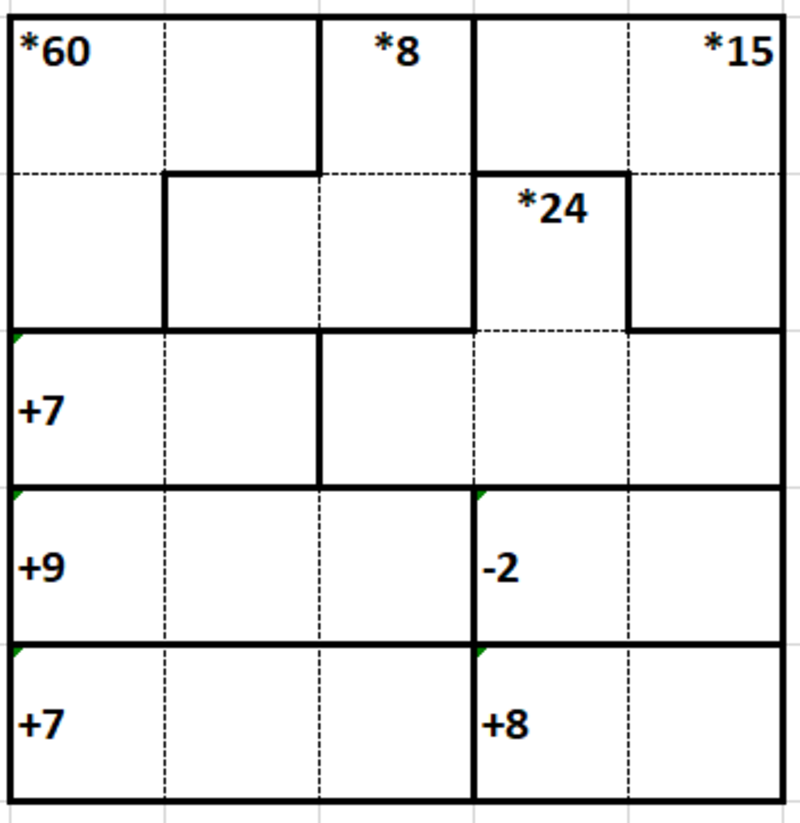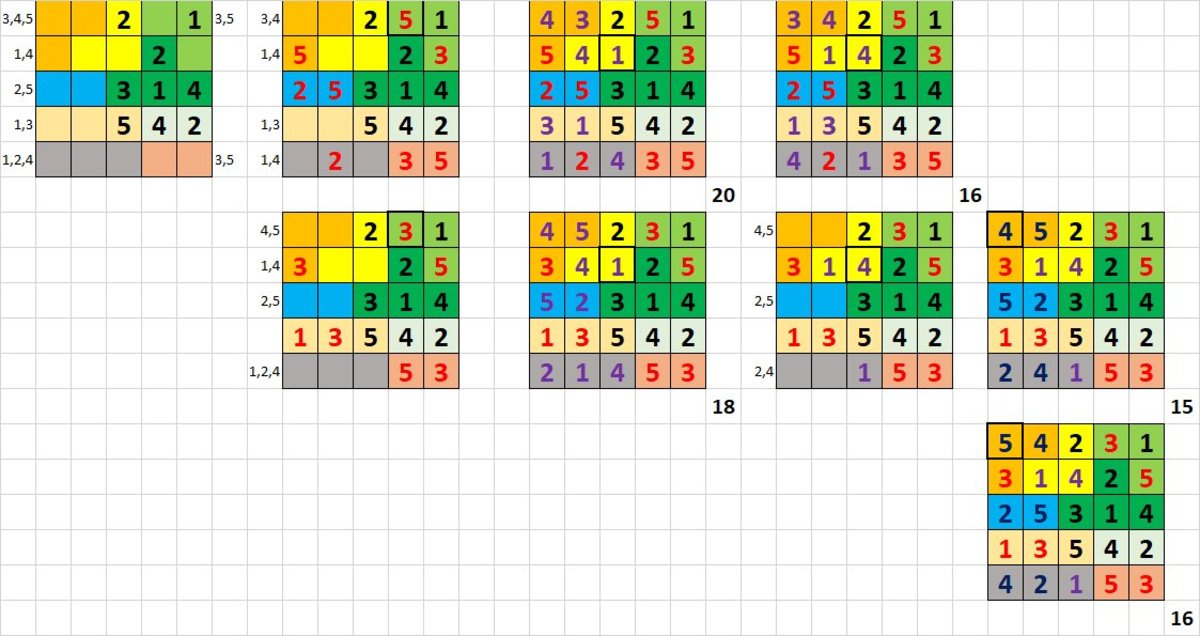Calcudoku puzzle with multiple solutions
Consider the following Calcudoku puzzle:

This is a puzzle with multiple solutions. For the -th solution, let be the sum of the entries on the main diagonal from the top left to the bottom right. As your answer enter , where is the number of solutions.
The answer is 85.
This section requires Javascript.
You are seeing this because something didn't load right. We suggest you, (a) try
refreshing the page, (b) enabling javascript if it is disabled on your browser and,
finally, (c)
loading the
non-javascript version of this page
. We're sorry about the hassle.

My python code: